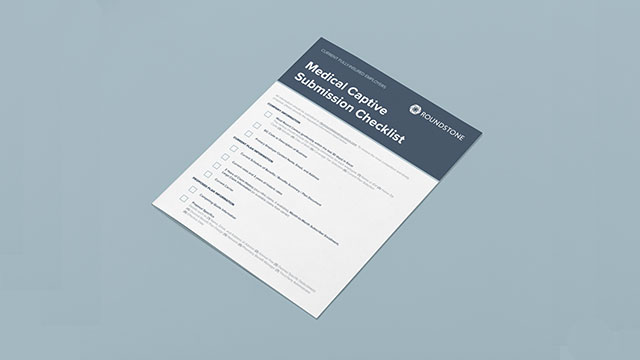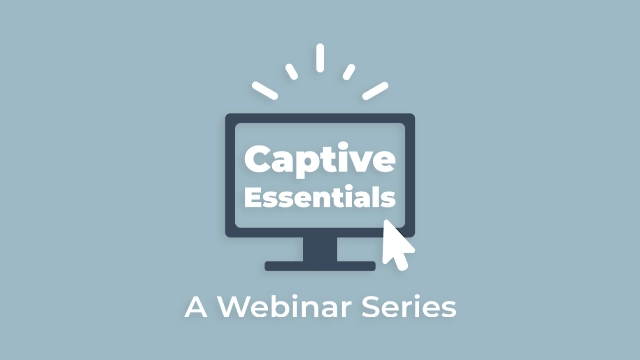Highlights
- Small to midsize companies looking for cost-effective healthcare must make changes from the bottom up.
- Bottom-up changes include switching to self-funded group captive insurance and incentivizing low-cost, high-quality care.
- With Roundstone’s self-insurance solution, you can build your self-funded plan to meet the healthcare needs of your employees and save money year over year.
In the face of rising healthcare prices, it’s vital for small to midsize businesses to implement cost-savings measures for cost-effective healthcare in 2022 and beyond. By joining a self-funded group captive plan, these employers can provide high-quality health insurance for employees while saving money.
Current State of Employer-Sponsored Healthcare (and its Shortcomings)
The current state of employer-sponsored healthcare resembles the classic cartoon Ralph Wolf and Sam Sheepdog. In the cartoon, the main characters clock in for a day of work, run around chasing each other, and leave a helpless pack of sheep paralyzed in their midst.
In this analogy, healthcare consumers, particularly small to midsize employers and their employees, are the helpless sheep. They are caught up in the run-around between healthcare providers and big-name insurance companies, unable to move and experience freedom from the rising cost of health insurance.
The following issues and measures have done very little to move the needle on ensuring that members are able to access and afford the care they need:
Lack of Quality Control
Healthcare lacks quality control. Patients move from small, independent providers to large hospital systems, receiving differing quality of care. Most mainstream healthcare is like a giant assembly line with no quality control oversight to standardize and track care.
Open-Priced Contracts
Traditionally in healthcare, if a cost isn’t provided up front, an open-priced contract is created, which is supposed to be a fair market price for the service. However, hospitals often charge exorbitant fees for services, leaving nearly 50% of Americans with medical debt they can’t pay.

Price Increases Across the Board
Due to the COVID-19 pandemic and the resulting nursing and hospital staff shortages, hospitals and providers are increasing prices across the board. For example, Medicare’s price projections through 2030 anticipate a 7.2% annual spending increase, with private insurance spending to increase by 5.7% in the same period.
This spending increase is contributing to insurance premium increases of 3.5% or more each year.
Coming Changes That Affect Cost-Effective Healthcare
Post-COVID-19, there have been several changes to the healthcare industry that may change the landscape for the better.
The 32-fold increase in telehealth in 2021 has given patients a more accessible way to receive healthcare services. This move from inpatient to outpatient services is more convenient for patients and costs less than in-person visits for employers.
On January 1, 2022, the No Surprises Act went into effect. This bill requires all healthcare providers to publish their prices and give patients an easy-to-understand summary of charges they must consent to before receiving out-of-network care.
Finally, some patients see a lower cash price for services that offer an alternative to costly procedures covered by insurance. For example, those covered by insurance are sometimes charged thousands of dollars for a procedure like a colonoscopy, while the cash price may be as low as $700. Centers of excellence can also help reduce costs on routine and scheduled procedures like colonoscopies.
New tools like the Health Cost Labs website offer consumers a way to see hospital prices so they can compare and find the best option.
Changing Employee Health Insurance From the Bottom Up Through a Self-Funded Insurance Plan
Amid positive shifts in the healthcare landscape, employers must continue to push for change from the bottom up — by providing their employees with quality care that makes sense while educating them on how to get the most from their healthcare benefits.
Here’s how.
Move to a Self-Funded Insurance Plan
Joining a self-funded group captive insurance plan instead of a fully insured plan with a mega carrier can offer you information, control, and savings. With a self-insured plan, you can control plan design and see a return of your unused premiums. Roundstone recently distributed $10.5 million in savings back to its captive participant clients, highlighting just one benefit of moving to self-funded health insurance.
Partner With Trusted Advisors in a Self-Funded Insurance Plan
Insurance brokers often steer companies toward an insurer because they earn a commission on the contract. Instead, partner with a trusted advisor who will help you discover solutions that are in your best interest rather than theirs.
Roundstone advisors work with our Cost Savings Investigator (CSI) team to find solutions to your healthcare needs. They can help you tailor your self-insured plan design and find innovative cost containment strategies that will help you provide the best care possible at a reasonable price.
Work Together With Your Employees
Adopt a “we’re in this together” strategy with your employees by educating them about their healthcare options and how to make choices that get them the care they need at a reasonable cost for the company.
For instance, by helping them understand the differences in cost among telehealth, urgent care, and ER services and steering them toward the low-cost option, you can lower overall costs, which ultimately lowers costs for them, too.
Implement Cost Containment Strategies in Your Self-Funded Insurance Plan
Implementing cost containment strategies to save on healthcare costs for your company. Consider starting a Direct Primary Care program, concierge care system, or Centers of Excellence strategy. These options get your employees better care upfront at a better price, lowering costs and preventing high-dollar claims in the future.
Build Incentives Into Your Self-Funded Insurance Plan
You can build incentives into your self-insured group captive plan to reduce costs. Try incentives like waiving cost-sharing responsibilities, reducing co-pays, or increasing co-pays and deductibles for higher-cost services like urgent care and ER.
Choose Vendors Wisely
Work with cost-effective vendors for auxiliary services. Explore independent imaging centers and labs for diagnostics and testing.
Use Out-of-the-Box Services in Your Self-Funded Insurance Plan
Use new healthcare services from out-of-the-box sources like Walmart and Amazon. Amazon Care can help you with low-cost healthcare like vaccines and offers healthcare teams to guide patients through their experiences.

Get Cost-Effective Healthcare With Roundstone’s Self-Insurance
Experience freedom of choice with a group captive plan from Roundstone. Our advisors and Cost Savings Investigators can work with you to design a plan that addresses your company’s employee benefits needs and fits your healthcare budget.
Contact Roundstone today to learn how you could save thousands on your health insurance costs and provide better coverage for your employees through a self-funded health insurance plan.
Material for this article was drawn from the Medical Captive Forum 2022 webinar How Employers and Employees Can Beat the High Cost of Health Care Together. Our thanks go to panelists Thomas Campanella, Marshall Allen, and Chas Rhoades.















